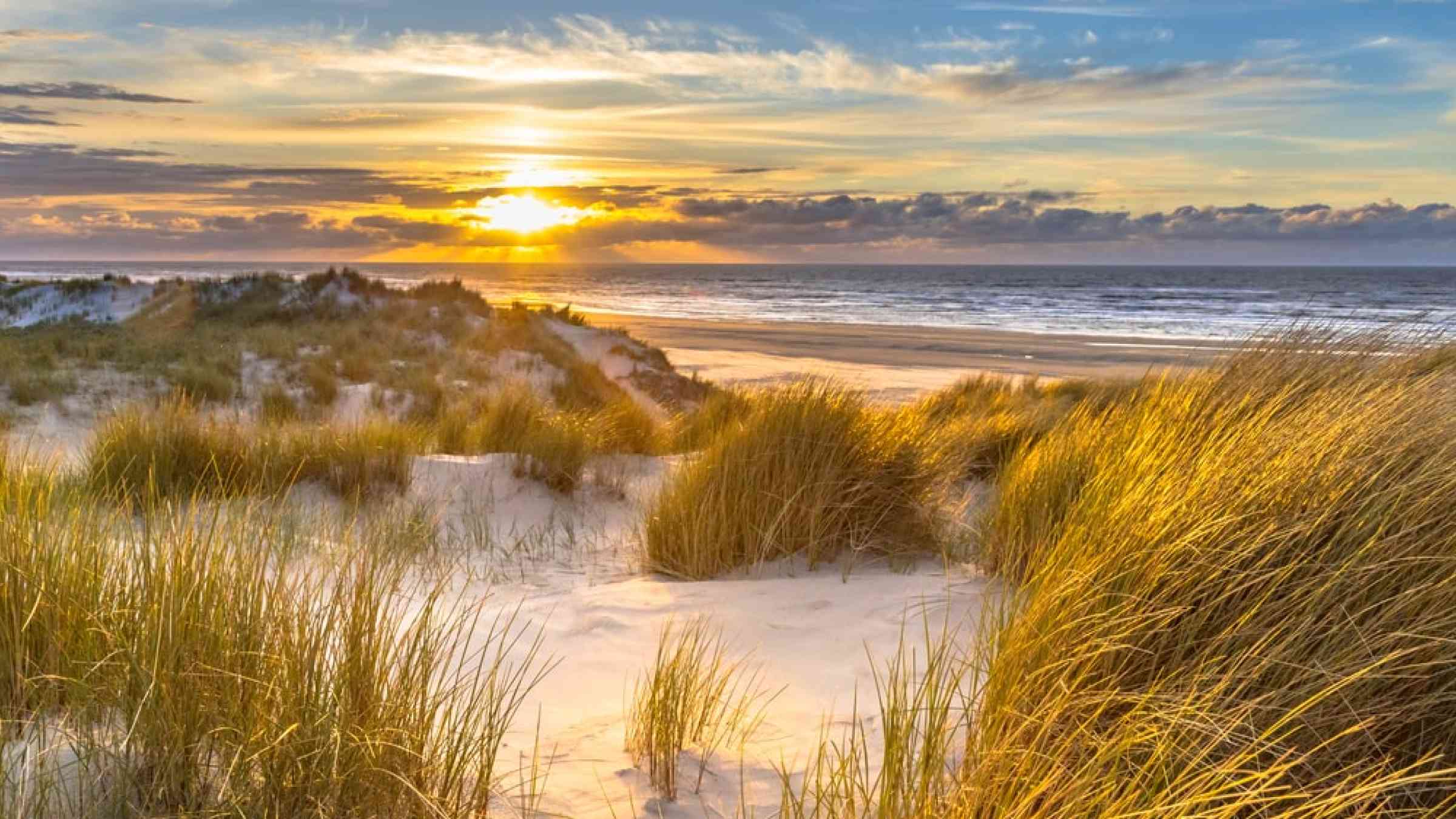Plants build dunes but can speed erosion during severe storms

When waves hit vegetated dunes, waterlogged areas form in front of plants, making for sand that’s easier to wash away. But you still need plants to form dunes in the first place.
People plant vegetation on some beaches to shore up erosion-prone dunes. But surprisingly, new experiments show that under the most severe storm conditions, plants may instead accelerate erosion, especially when they aren’t well established.
In recent decades, studies have suggested that plant roots grab onto sand and keep it from blowing or washing away, ultimately building dunes. Projects aimed at restoring degraded coastline or protecting development near the shore often turn to planting to promote the buildup of wave-buffering dunes.
In laboratory water tanks called flumes, scientists have previously put plants on dunes and watched what happened when waves hit. These tests have shown that planting could prevent erosion of the dunes. But they have been relatively small experiments, done in tanks about as wide as a swimming pool lane and as long as a suburban back yard, said Rusty Feagin, an ecologist at Texas A&M University in College Station. With the small waves such tanks generate, it’s not clear how well these experiments capture real-world phenomena. “What happens when we go really big?” Feagin said.
He and his colleagues went big, building a 70-meter (230-foot) beach in a flume the length of a football field. “We had to bring in 76 or so dump trucks of sand from the Oregon coast,” said coastal engineer Meagan Wengrove at Oregon State University in Corvallis, where the experiment took place.
Truckload by truckload, the team added sand to the tank, rigging it with pressure and moisture sensors. In one set of experiments, the dune was planted with bitter panic grass, a beach plant common in the southeastern United States, and was allowed to grow for 6 months. The researchers compared waves on the vegetated dune with those crashing on one where the sand was left bare.
“The results are more transferable directly to reality, basically, than all the other experiments that are done in smaller settings.”
The team patterned the swell of the waves’ height after those of Hurricane Sandy, which struck the U.S. East Coast in 2012. They had to scale the waves down from the roughly 2.5-meter (8.2-foot) maximum height of the storm’s waves to 1 meter (3.3 feet). But that’s more like what’s happening on beaches during big storms than the perhaps 20-centimeter (0.66-foot) ones used in previous studies, Feagin said.
“The results are more transferable directly to reality, basically, than all the other experiments that are done in smaller settings,” said Davide De Battisti, an ecologist at the University of Padua in Italy who wasn’t involved in the study.
For each condition, the team sent waves crashing against the dune over 19 hours. Periodically, the scientists collected data, including measurements of water velocity, sonar scans that mapped the underwater dune profile, and lidar images above the water. These measurements allowed them to detail how the dune eroded during the storm and compare the bare and planted dunes.
Scarp Attack
“As the vegetated dune started to erode, it formed this scarp,” Wengrove said. A scarp is a steep step that can look like a vertical face or an undercut edge. “Once the scarp forms, it can eat backwards pretty fast,” she said.
Both the vegetated and bare dunes actually formed scarps, although the scarp on the vegetated dune formed several hours earlier, moved farther inland, and was twice as high as the one on the bare sand.
Researchers haven’t fully understood why scarps form, Wengrove said, but with their detailed data, the team was able to get some insights on the process. During the simulated storm, the energy of the waves periodically piled sand onto the dune and pulled it off again.
Without vegetation, bigger waves could deposit sand on the top of the bare dune. Plants stalled such waves from running up the vegetated beach, pitting the sand in front of the plants and causing water to seep into the ground there. The percolating water made the sand less compact and more likely to wash away when additional waves battered the dune. On the bare dune, water infiltration occurred over a larger area, so it had less of an effect.
“We kind of assume that vegetation is good and that it stops erosion, [but] erosion is a totally different process.”
“We kind of assume that vegetation is good and that it stops erosion,” Feagin said. “But really erosion is a totally different process” than that, Feagin said.
Although the study is “very well done,” De Battisti said, particularly noting the amount of work that went into it and the length of time researchers allowed the plants to grow prior to testing, “it’s not like a real dune.” Beach plants build dunes over decades, and the dune system eventually has the roots, rhizomes, and dead material needed to make compacted sand.
The research team acknowledges this. Ultimately, the results are most applicable to a newly planted dune, Wengrove said. In restoration projects, people may grow plants on a dune and think they have covered their risk of coastal erosion from storms. “But there’s some lag time while the plants are becoming established,” she said.
“You should still plant vegetation on sand dunes,” Feagin said. Plants will grow in; they just need time to structure the sand in the decades before a major storm, he explained. When the storm eventually hits, the fortified dune will absorb some of the energy of the storm before it reaches buildings.